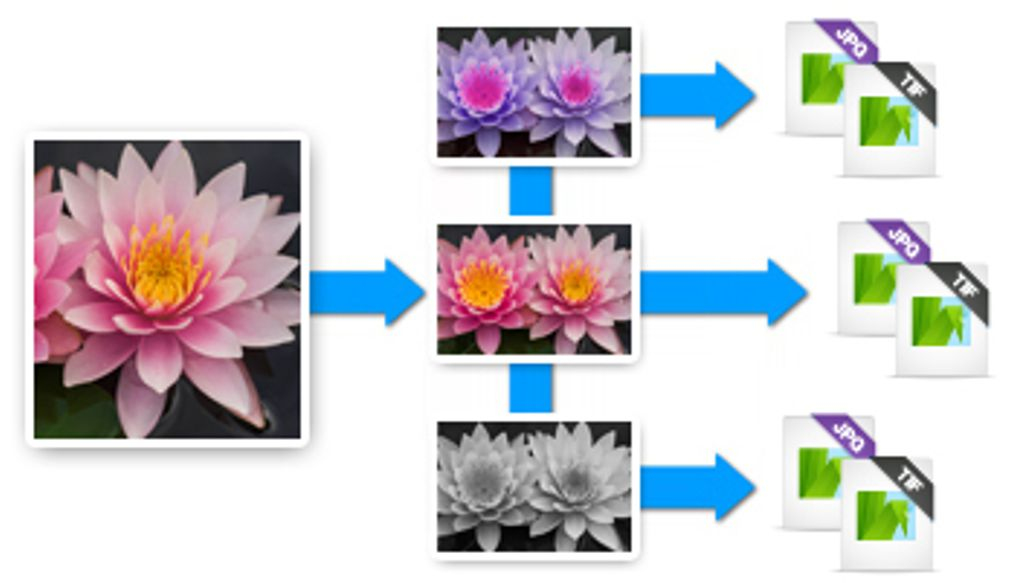About non-destructive editing
The image editor in Corel AfterShot Pro is completely non-destructive, so you are free to experiment and edit your images as much as you want, knowing that you can always revert to the original version. All the edits that you make and metadata that you add is stored either in a sidecar XMP file, within a Corel AfterShot Pro catalog, or both.
To view or use your image adjustments in other applications, you need to export the image. For more information about exporting your files, see Exporting images.
The original file is always protected. The master version is based on the original file, but you can create as many versions as you like.
Because your original file is always protected (as a master file), when you edit a photo, your edits are viewable within Corel AfterShot Pro on a representation of the master file called a master version. You can create as many additional versions as you like. When you create a version, the application does not need to make a copy of the master file, the information is efficiently stored in the XMP file or catalog, so you can create as many versions as you like without taking up much storage space.
The application automatically saves each edit that you make to a photo, so your editing workflow between photos is smooth. A complete history is kept for all the photos that you have imported into your Library, so you undo or redo changes at any time. Note, if you are working on photos that have not been added to the Library, the edit history is only retained for the current editing session. For more information, see
Using the History palette.

